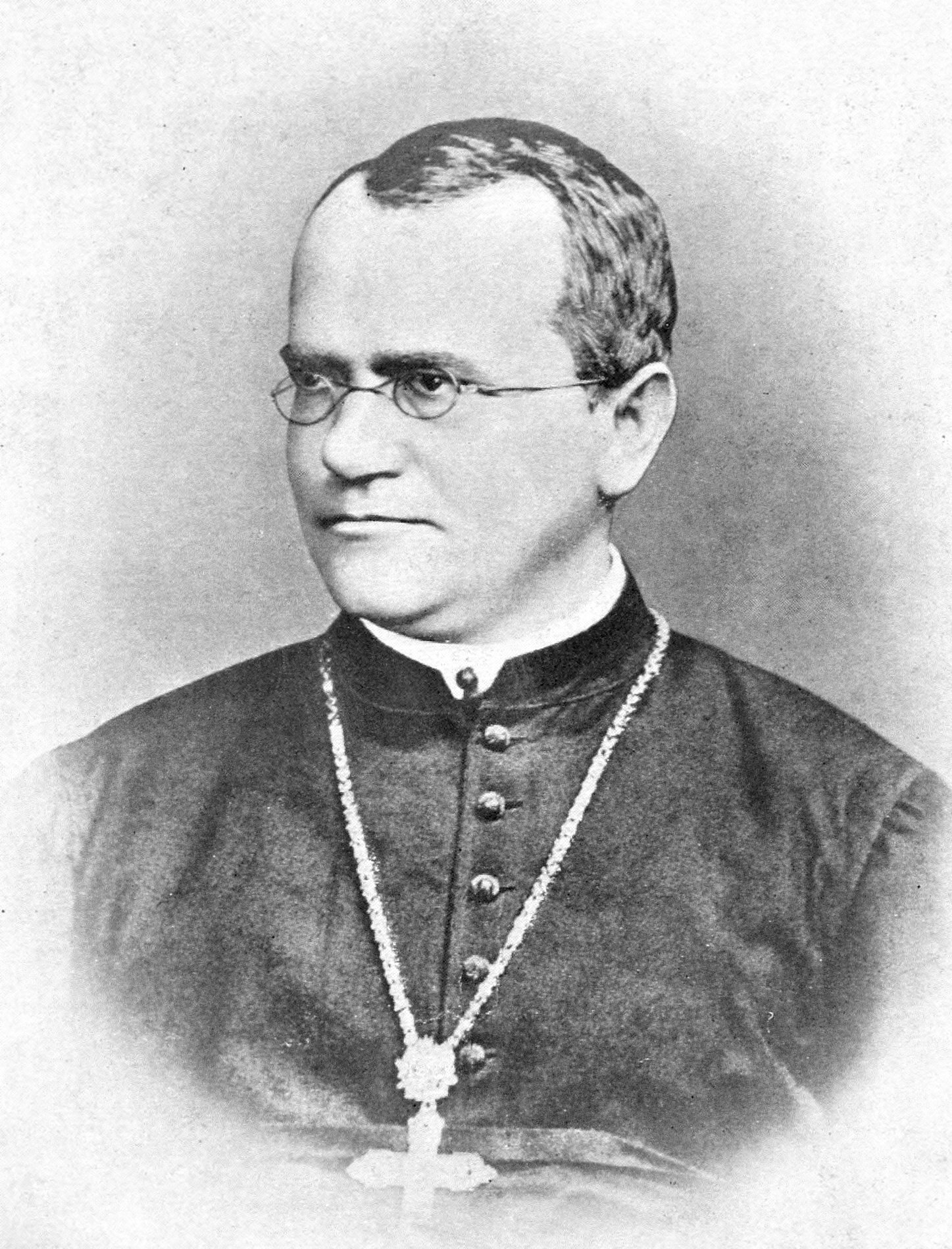Austria 1822-1884
Gregor Johann Mendel is remembered for his foundational work in the field of genetics and is thus considered the Father of Modern Genetics. (1) There are three major laws of genetics are the Law of Segregation, the Law of Independent Assortment, and the Law of Dominance. The Law of Segregation states that each offspring inherits one gene from each parent with are made into a gene pair. (2) The Law of Independent Assortment states that genes for different traits are sorted separately so inheritance of one trait does not depend of the inheritance of another. (2) The Law of Dominance states that an organism with alternate forms of a gene will exhibit the dominant trait. (2)
Gregor Mendel was originally named Johann Mendel, and born in 1822 on a farm in Heinzendorf, Austria, now Czechoslovakia. He stayed at the farm until the age of 11, when his teacher recommended he go to Troppau to continue his education. Although the education was a financial challenge for his family, he made it worthwhile by graduating in 1840 with honors. He continued to the University of Olmütz, again successful in his studies, this time supporting himself through tutoring.
Even so, the monetary issue was too severe, leading him to the St. Thomas Abbey, which belonged to the Augustinian order, and he commenced studying to become a monk. (5) This was against his father’s wishes as Mendel’s father wished him to return to the farm. He took the name Gregor, and was given access to the monastery's extensive library and experimental resources. In 1846 Mendel took classes under the leading authority in plant breeding, thus laying the groundwork for his later experiments. (3) He became a priest in 1847, and got his own parish in 1848 the minimum age, though this achievement was partly due to an infection which killed three priests in 1847. (5)
A couple of years later, in 1849, Mendel became ill and his superior realized he wasn’t able to be a parish priest. As a result, he was reassigned as a high school teacher. He was an effective teacher, and attempted to turn this into his career. Therefore, in 1850 he took the exams to become a high school teacher. He would have succeeded too, except for the zoology and geology sections. (4) He was sent on to the University of Vienna, learning mathematics and physics under Christian Doppler, the Doppler for which the effect is named. He learned botany from Franz Unger, who had been considering a theory of evolution (not inspired by Darwin). (1) In 1853, he finally completed his studies and in 1856 he decided to try the teaching exams once again. He’d practiced teaching while at the University of Vienna, and then… failed again. (5) As a result, he was very restricted in how much he could teach, only retaining the ability to teach at all because of his unique skill. (5) However, this could be seen as a semi-positive development because it gave him the time to conduct his most famous experiments.
,
In 1856 Gregor Mendel started his important experiments with peas. At this time, people already new about selective breeding, but it was believed that hybrid plants would revert to its original form, an idea known as blending. (1) Mendel's work spanned 7 years, 1856-1863, and was conducted with 15,000-30,000 pea plants. Mendel studied traits in the plants that were opposite of each other, he cross fertilized plants that were tall with shorts ones, and those containing green seeds with ones with yellow seeds. He found the same result for all the traits but the following diagram helps visualize the findings.
“When Mendel bred purple-flowered peas (BB) with white-flowered peas (bb), every plant in the next generation had only purple flowers (Bb). When these purple-flowered plants (Bb) were bred with one-another to create a second-generation of plants, some white flowered plants appeared again (bb). Mendel realized that his purple-flowered plants still held instructions for making white flowers somewhere inside them. He also found that the number of purple to white was predictable. 75 percent of the second-generation of plants had purple flowers, while 25 percent had white flowers. He called the purple trait dominant and the white trait recessive.”(3)
In 1866, Mendel published his results but people did not fully grasp its importance. It was only by 1900, after other studies found the same result that his experiment’s importance were realized.
Mendel’s story is fascinating because of the amount of failure he had to endure in order to succeed. His story sounds like the fears of college graduates, filled with failed tests and switching schools, until he finally makes a breakthrough while working as a teacher. It is illuminating however, to note that he received little recognition until, some time later, other researchers were conducting experiments on the same topic and happened upon Mendel’s work. (5) The researchers concluded that their experiments had yielded the same results as Mendel’s, but that fact was only recognized posthumously. (5) The apparent upshot of all this is that if you work and and refuse to give up, even a seemingly monotonous existence as a teacher can give way to unimaginable fame, after death, that is.
Work Cited
- Gregor Mendel Biography https://www.biography.com/people/gregor-mendel-39282
- Children resemble their parents. http://www.dnaftb.org/1/bio.html
- Gregor Mendel https://www.famousscientists.org/gregor-mendel/
- Johann Gregor Mendel (1822-1884) https://embryo.asu.edu/pages/johann-gregor-mendel-1822-1884
- Johann Gregor Mendel: Paragon of Experimental Science https://www.ncbi.nlm.nih.gov/pmc/articles/PMC4707027/
- Mendel’s Principles of Hereditary https://archive.org/details/mendelsprinciple1902bate


No comments:
Post a Comment